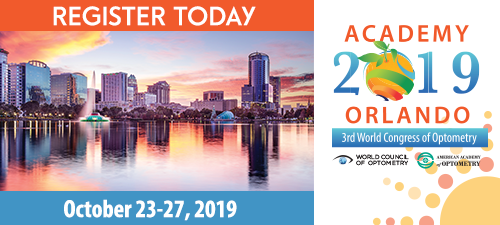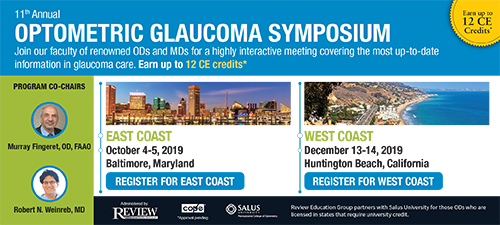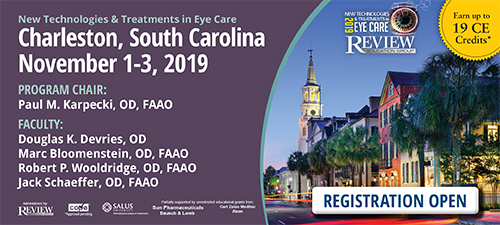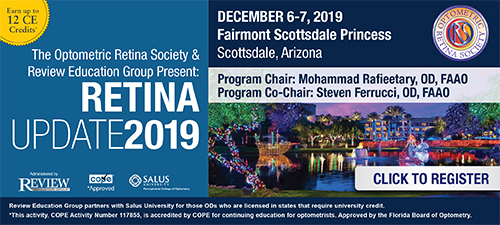
A
weekly e-journal by Art Epstein, OD, FAAO
Off the Cuff: The Life of Korb
I’ve known Donald Korb for many years. I consider myself fortunate. Long before I actually met Donald, he had already influenced my professional career and, in some ways, my life. In fact, as I look back on my years in practice, no single individual has had more influence on how I think, view things and care for patients than has Donald Korb. One thing about Donald that no one really talks much about is his courage and tenacity. At a time when commercialism influenced the very scientific foundations of dry eye, Donald stood undeterred, speaking the truth as he knew it. His seminal paper, “‘Dry Eye’ Is the Wrong Diagnosis for Millions,” co-authored with Caroline Blackie, like much of most of their work, is years ahead of the rest.
|
|||||
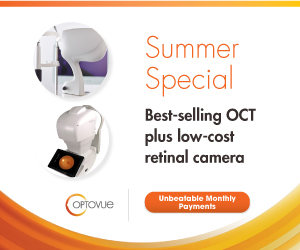 |
||
| Impact of Contact Lens Materials on the mferg Response of the Human Retina | ||||
The multifocal electroretinography (mfERG) was recorded in 18 healthy subjects to investigate the effect of different hydrophilic and rigid gas-permeable contact lens (CL) materials on (mfERG). Eleven subjects underwent mfERG recording wearing two different hydrophilic CLs with different water contents in a randomized order (one silicone hydrogel-Comfilcon A, 48%EWC, and one hydrogel-Omafilcon A, 62% EWC) and seven other subjects wore a hydrophobic rigid gas-permeable scleral lens (SL)-Hexafocon A. Control measures were recorded without CL in both groups. mfERG recordings were performed with a stimulus array pattern of 103-scaled hexagons displayed on a 19-inch RGB monitor at 28cm distance at a frame rate of 60Hz. The amplitude (nV), implicit time and response density (nV/deg2) of the first-order kernel components N1, P1 and N2 were evaluated for the total mfERG response, and for the response averages of four quadrants and of six successive concentric rings. Subjects were optically corrected for the working distance of ERG display.
Hydrophobic material significantly decreased the P1 amplitude of the total mfERG response, at Rings 3, 4 and 6 and Quadrant 4 (> 53.77 ± 43.2 nV), as well as the total (- 71.59 ± 50.68 nV) and Ring 6 (-104.76 ± 79.88 nV) N2 amplitude. N1, P1 and N2 peak times suffered significant changes with both hydrophilic CL. Omafilcon A significantly increased P1 amplitude of Ring 5 and N2 amplitude of Ring 4, when compared to baseline (52.40 ± 71.87 nV) and to Comfilcon A (39.51 ± 48.63 nV), respectively. Hydrophobic CL slightly attenuated the strength of the mfERG signal, especially at the middle to peripheral retinal areas, while hydrophilic CL slightly changed the implicit time of the response. Different hydrophilic CL materials might affect the mfERG response differently. When considering the measurement of mfERG obtained with a CL in place, researchers should bear in mind that some changes can be related to CL material. |
||||
SOURCE: Amorim-de-Sousa A, Moreira L, Macedo-de-Araújo R, et al. Impact of contact lens materials on the mferg response of the human retina. Doc Ophthalmol. 2019; Oct 1. [Epub ahead of print]. |
||||
 |
||
| Risk Factors for Dry Eye After Refractive Surgery | ||||
These researchers evaluated the factors associated with clinically significant dry eye after keratorefractive surgery. This large database retrospective study included consecutive cases of myopic laser in situ keratomileusis (LASIK) or photorefractive keratectomy performed between 2008 and 2016 at Care-Vision Laser Center, Israel. Patients were divided into two groups according to whether they developed clinically significant dry eye.
A total of 25,317 right eyes of 25,317 patients, with a mean age of 27 ± 8.3 years, were included. Postoperative dry eye developed in 1,518 eyes (6.0%). The dry eye group was older (29.2 ± 9 vs. 27.6 ± 8.3 years) and had a higher proportion of women (48.5% vs. 44.8%), lower preoperative spherical equivalent (3.7 ± 2 vs. 4.0 ± 2.3D), lower preoperative best-corrected visual acuity (0.019 ± 0.057 vs. 0.016 ± 0.064 Logarithm of the Minimum Angle of Resolution [LogMAR]), and lower proportion of preoperative soft contact lens wearers (40.6% vs. 45.5%). In the postoperative dry eye group, a high proportion underwent LASIK (52.4% vs. 38.7%) and was treated with a 7-mm (as opposed to 6 mm) optic zone (18.9% vs. 16.3%). In multivariable analysis, older age, female gender, lower preoperative refractive error and LASIK were associated with postoperative dry eye. Patients who were of older age, of female gender and had a lower preoperative refractive error, and those undergoing LASIK were more likely to develop dry eye disease after keratorefractive surgery. |
||||
SOURCE: Shehadeh-Mashor R, Mimouni M, Shapira Y, et al. Risk factors for dry eye after refractive surgery. Cornea. 2019; Sep 17. [Epub ahead of print]. |
||||
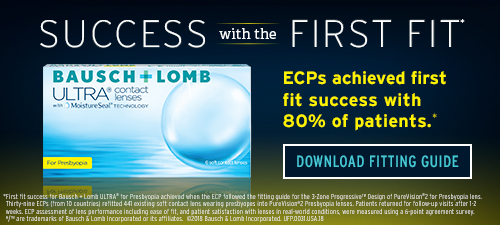 |
||
| Incidence and Baseline Risk Factors for Pseudoexfoliation in Sweden: A Long-term Follow-Up Study | ||||
These researchers evaluated the incidence of pseudoexfoliation (PEX) and its associated risk factors in a defined population in Sweden. The development of PEX was studied in a cohort of 489 residents ages 65 to 74 years, examined in a population survey in the municipality of Tierp from 1984 to 1986. To expand the sample size, 576 people were recruited by means of glaucoma case records established at the Eye Department in Tierp from 1978 to 2007. In this way, the cohort comprised 1,065 subjects, representing nearly 10,500 person-years at risk. Incidence rates with 95% confidence intervals (CIs) were calculated. Survival analyses were performed to identify predictors for PEX. Those with a follow-up time shorter than one year were excluded. By the end of the study in November 2018, 179 new cases of PEX had been found. Of these, 78 had participated in the population survey, equal to an incidence rate of 14.8 per 1,000 person-years (95% CI, 11.5 to 18.1). The development of PEX was associated with higher age (hazard ratio 1.08 per year; 95% CI, 1.03 to 1.13) and female gender (hazard ratio 1.59; 95% CI, 1.16 to 2.18). In this study on a Swedish population, researchers reported that the incidence of PEX was high. Increasing age and female gender were the only predictors of PEX identified. |
||||
SOURCE: Ekström C, Winblad von Walter L. Incidence and baseline risk factors for pseudoexfoliation in Sweden: a long-term follow-up study. Acta Ophthalmol. 2019; Oct 1. [Epub ahead of print]. |
||||
 |
||
| News & Notes | |||||||||||||||
| AAOF Announces Student Giving Matching Travel Grant Recipients The American Academy of Optometry Foundation announced the recipients of the 2019 AAOF Student Giving Matching Travel Grants. The program was started in 2014 to create a climate of giving back to the profession, and promote involvement in Academy chapters at North American schools and colleges of optometry. All of the schools raised the funds, and the money is matched with a travel grant opportunity for each student to attend Academy 2019 Orlando and 3rd World Congress of Optometry (Oct. 23 to 27). View the recipients. |
|||||||||||||||
| B+L Enters Licensing Agreement With Tatvum Research Bausch + Lomb entered into a licensing agreement with Tatvum Research that provides Bausch + Lomb with worldwide commercial rights to new IOL designs for enVista IOLs that will address astigmatism and presbyopia. When available, the new IOLs, developed in partnership by the two companies, will include a series of IOLs that will correct for astigmatism and presbyopia, and feature an enhanced range of vision. Bausch + Lomb anticipates filing for regulatory approval of the lenses over the next several years. Read more. |
|||||||||||||||
| J&J Vision Care Introduces Acuvue RevitaLens Disinfecting Solution Johnson & Johnson Vision launched the Acuvue RevitaLens Multi-Purpose Disinfecting Solution (MPDS), designed to deliver exceptional disinfection and all-day comfort for reusable contact lens wearers. Its dual-disinfecting formula is intended to be gentle on the eyes but tough on germs and bacteria. Read more. |
|||||||||||||||
|
|||||||||||||||
|
|||||||||||||||
|
|||||||||||||||
|
Optometric Physician™ (OP) newsletter is owned and published by Dr. Arthur Epstein. It is distributed by the Review Group, a Division of Jobson Medical Information LLC (JMI), 11 Campus Boulevard, Newtown Square, PA 19073. HOW TO ADVERTISE |


